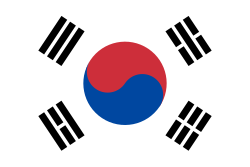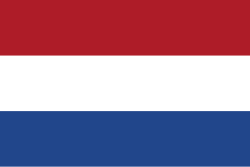Open de Nice Côte d’Azur 2016 – mužská dvouhra
| Open de Nice Côte d’Azur 2016 | ||||
|---|---|---|---|---|
| Vítěz: | ||||
| Finalista: | ||||
| Výsledek: | 6–3, 3–6, 6–0 | |||
| Soutěže | ||||
| mužská dvouhra • mužská čtyřhra | ||||
| ||||
Do soutěže mužské dvouhry na tenisovém turnaji Open de Nice Côte d’Azur 2016 nastoupilo dvacet osm hráčů. Obhájcem titulu byl nejvýše nasazený rakouský tenista Dominic Thiem, který turnaj opanoval, když ve finále zdolal turnajovou osmičku a o tři roky mladšího Alexandera Zvereva z Německa, pro něhož to bylo první finále na okruhu ATP Tour, po třísetovém průběhu 6–3, 3–6 a 6–0.
V probíhající sezóně si tak připsal třetí turnajové vítězství, které představovalo šestý singlový titul na okruhu ATP Tour.[1]
Nasazení hráčů
Čtyři nejvýše nasazení hráči obdrželi volný los do druhého kola.
 Dominic Thiem (vítěz)
Dominic Thiem (vítěz) Gilles Simon (čtvrtfinále)
Gilles Simon (čtvrtfinále) Kevin Anderson (čtvrtfinále)
Kevin Anderson (čtvrtfinále) Benoît Paire (2. kolo)
Benoît Paire (2. kolo) João Sousa (semifinále)
João Sousa (semifinále) Fabio Fognini (1. kolo)
Fabio Fognini (1. kolo) Andreas Seppi (čtvrtfinále)
Andreas Seppi (čtvrtfinále) Alexander Zverev (finále)
Alexander Zverev (finále)
Pavouk
| Legenda | ||
|
|
|
Finálová fáze
| Semifinále | Finále | |||||||||||
| 1 | | 6 | 6 | |||||||||
| | 1 | 3 | ||||||||||
| 1 | | 6 | 3 | 6 | ||||||||
| 8 | | 4 | 6 | 0 | ||||||||
| 5 | | 4 | 6 | 2 | ||||||||
| 8 | | 6 | 4 | 6 | ||||||||
Horní polovina
| První kolo | Druhé kolo | Čtvrtfinále | Semifinále | ||||||||||||||||||||||
| 1 | | 6 | 6 | ||||||||||||||||||||||
| | 65 | 6 | 3 | | 3 | 0 | |||||||||||||||||||
| | 77 | 3 | 6 | 1 | | 6 | 6 | ||||||||||||||||||
| | 63 | 3 | 7 | | 3 | 3 | |||||||||||||||||||
| | 77 | 6 | | 6 | 2 | 4 | |||||||||||||||||||
| | 77 | 5 | 4 | 7 | | 4 | 6 | 6 | |||||||||||||||||
| 7 | | 64 | 7 | 6 | 1 | | 6 | 6 | |||||||||||||||||
| | 1 | 3 | |||||||||||||||||||||||
| 4 | | 3 | 0 | ||||||||||||||||||||||
| | 77 | 3 | 4 | | 6 | 6 | |||||||||||||||||||
| | 64 | 6 | 6 | | 5 | 77 | 6 | ||||||||||||||||||
| Q | | 1 | 77 | 65 | | 7 | 64 | 1 | |||||||||||||||||
| | 6 | 64 | 77 | | 6 | 6 | |||||||||||||||||||
| Q | | 4 | 6 | 6 | Q | | 3 | 0 | |||||||||||||||||
| 6/WC | | 6 | 3 | 3 | |||||||||||||||||||||
Dolní polovina
| První kolo | Druhé kolo | Čtvrtfinále | Semifinále | ||||||||||||||||||||||
| 5 | | 5 | 6 | 6 | |||||||||||||||||||||
| WC | | 7 | 4 | 4 | 5 | | 3 | 6 | 6 | ||||||||||||||||
| | 6 | 6 | | 6 | 4 | 4 | |||||||||||||||||||
| | 3 | 2 | 5 | | 7 | 7 | |||||||||||||||||||
| Q | | 77 | 6 | 3/WC | | 5 | 5 | ||||||||||||||||||
| | 65 | 1 | Q | | 64 | 3 | |||||||||||||||||||
| 3/WC | | 77 | 6 | ||||||||||||||||||||||
| 5 | | 4 | 6 | 2 | |||||||||||||||||||||
| 8 | | 5 | 7 | 0 | 8 | | 6 | 4 | 6 | ||||||||||||||||
| Q | | 7 | 5 | 0r | 8 | | 7 | 63 | 6 | ||||||||||||||||
| | 6 | 6 | | 5 | 77 | 2 | |||||||||||||||||||
| PR | | 3 | 1 | 8 | | 6 | 66 | 77 | |||||||||||||||||
| | 77 | 6 | 2 | | 3 | 78 | 61 | ||||||||||||||||||
| | 64 | 4 | | 4 | 4 | ||||||||||||||||||||
| 2 | | 6 | 6 | ||||||||||||||||||||||
Odkazy
Reference
V tomto článku byl použit překlad textu z článku 2016 Open de Nice Côte d'Azur – Singles na anglické Wikipedii.
- ↑ ZABLOUDIL, Luboš. Thiem poprvé obhájil titul. V Nice ve finále zdolal Zvereva [online]. TenisPortal.cz, 2016-05-21 [cit. 2016-05-21]. Dostupné online. (česky)
Externí odkazy
- Open de Nice Côte d’Azur 2016 – mužská dvouhra [PDF]. ATP Tour, Inc. [cit. 2016-05-18]. Dostupné online. (anglicky)
- Open de Nice Côte d’Azur 2016 – kvalifikace mužské dvouhry [PDF]. ATP Tour, Inc. [cit. 2016-05-18]. Dostupné online. (anglicky)
Média použitá na této stránce
Used color: National flag | South African Government and Pantone Color Picker
| zelená | rendered as RGB 0 119 73 | Pantone 3415 C |
| žlutá | rendered as RGB 255 184 28 | Pantone 1235 C |
| červená | rendered as RGB 224 60 49 | Pantone 179 C |
| modrá | rendered as RGB 0 20 137 | Pantone Reflex Blue C |
| bílá | rendered as RGB 255 255 255 | |
| černá | rendered as RGB 0 0 0 |
Flag of Portugal, created by Columbano Bordalo Pinheiro (1857-1929), officially adopted by Portuguese government in June 30th 1911 (in use since about November 1910).
Vlajka České republiky. Podoba státní vlajky České republiky je definována zákonem České národní rady č. 3/1993 Sb., o státních symbolech České republiky, přijatým 17. prosince 1992 a který nabyl účinnosti 1. ledna 1993, kdy rozdělením České a Slovenské Federativní republiky vznikla samostatná Česká republika. Vlajka je popsána v § 4 takto: „Státní vlajka České republiky se skládá z horního pruhu bílého a dolního pruhu červeného, mezi něž je vsunut žerďový modrý klín do poloviny délky vlajky. Poměr šířky k její délce je 2 : 3.“
The flag of the Dominican Republic has a centered white cross that extends to the edges. This emblem is similar to the flag design and shows a bible, a cross of gold and 6 Dominican flags. There are branches of olive and palm around the shield and above on the ribbon is the motto "Dios,Patria!, Libertad" ("God, Country, Freedom") and to amiable freedom. The blue is said to stand for liberty, red for the fire and blood of the independence struggle and the white cross symbolized that God has not forgotten his people. "Republica Dominicana". The Dominican flag was designed by Juan Pablo Duarte, father of the national Independence of Dominican Republic. The first dominican flag was sewn by a young lady named Concepción Bona, who lived across the street of El Baluarte, monument where the patriots gathered to fight for the independence, the night of February 27th, 1844. Concepción Bona was helped by her first cousin María de Jesús Pina.
The flag of the Dominican Republic has a centered white cross that extends to the edges. This emblem is similar to the flag design and shows a bible, a cross of gold and 6 Dominican flags. There are branches of olive and palm around the shield and above on the ribbon is the motto "Dios,Patria!, Libertad" ("God, Country, Freedom") and to amiable freedom. The blue is said to stand for liberty, red for the fire and blood of the independence struggle and the white cross symbolized that God has not forgotten his people. "Republica Dominicana". The Dominican flag was designed by Juan Pablo Duarte, father of the national Independence of Dominican Republic. The first dominican flag was sewn by a young lady named Concepción Bona, who lived across the street of El Baluarte, monument where the patriots gathered to fight for the independence, the night of February 27th, 1844. Concepción Bona was helped by her first cousin María de Jesús Pina.















